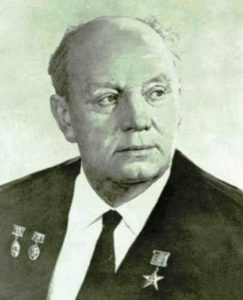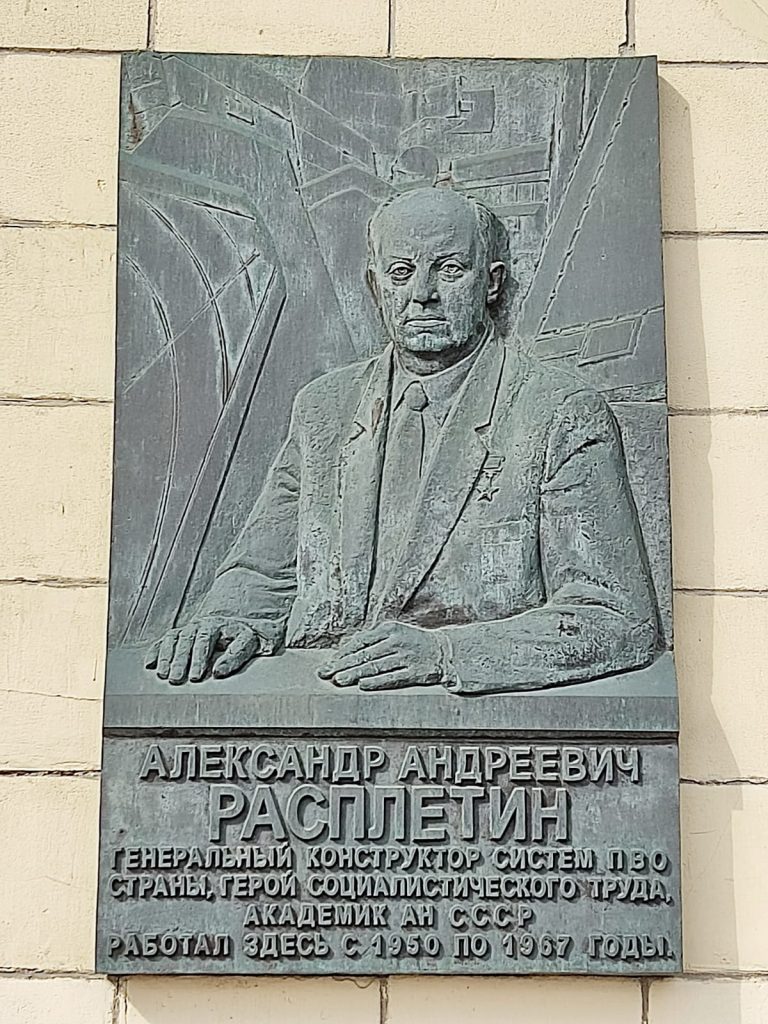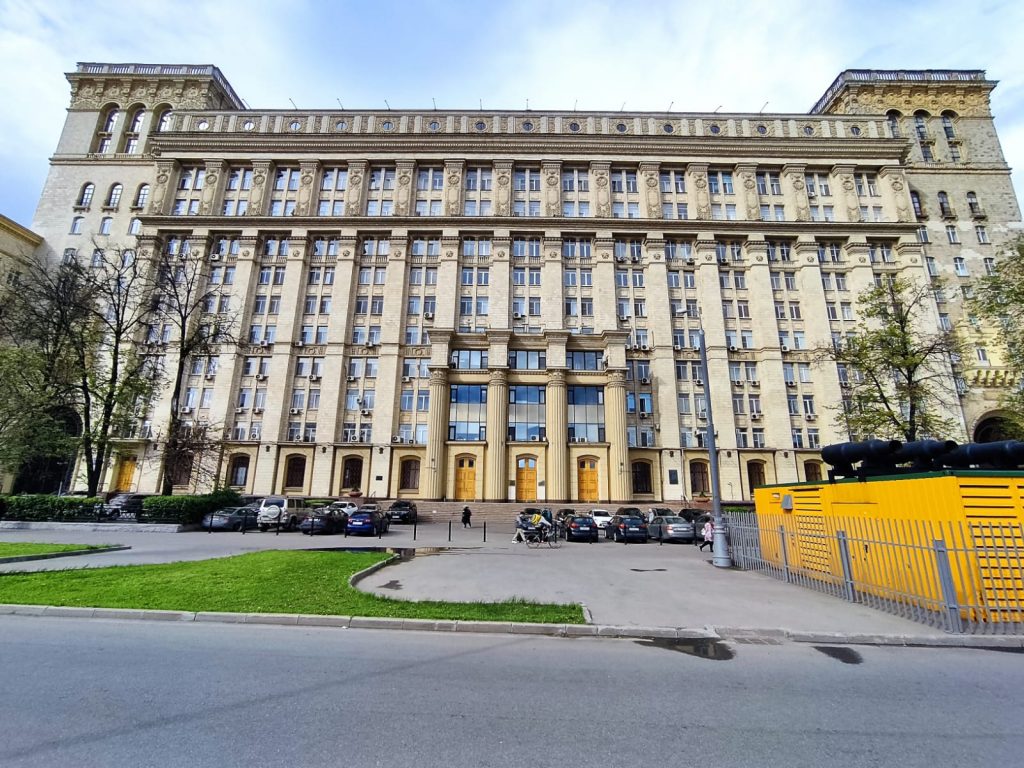Alexander Andreevich
Raspletin
1908-1967

Alexander Andreevich Raspletin was the Chief designer of KB-1 of the Ministry of Defence Industry of the USSR, Academician of the Academy of Sciences of the USSR, Candidate of Technical Sciences, Hero of Socialist Labor. He finished school named after A.V. Lunacharsky in Rybinsk in 1926. From 1926 he worked as a stoker at the Rybinsk power plant, from June 1927 he worked at the warehouse of the People’s Commissariat for Military and Naval Affairs as a worker and electrician. Since February 1929 he was a radio mechanic, and since June of the same year he was the head of the workshop of the cinema and radio base of the Rybinsk Department of Public Education. Since childhood, he was fond of amateur radio, in 1925 he built his first working tube receiver of his own design. From December 1925 he was already a member of the Rybinsk Society of Radio Amateurs, in 1926-1929 he was the chairman of the Rybinsk section of radio amateurs-short-wave radio of the All-Union Society of Friends of Radio. Since February 1930, he lived in Leningrad, studied at Leningrad Electrolabotochny Technical School (graduated in 1932), then at Leningrad Electrotechnical Institute named after V.I. Ulyanov (Lenin) (graduated in 1936). Simultaneously with his studies, he worked as a radio engineer at the Comintern plant. Since September 1931 he was an engineer of the Central Scientific Laboratory in the field of television, since 1933 he was a senior engineer and then the head of the television group in this laboratory. In 1932, while studying in the first year of the Institute, he published his first scientific work. Since April 1936 he was a senior engineer, then the head of the laboratory at the Research Institute-9. There, under his leadership, the first model of a domestic industrial-type 17TI3 television receiver was developed. He also led the creation of advanced television equipment for the projected ‘Palace of Soviets’ in Moscow (powerful stationary film installations, projection screens up to 10-15 square meters in size, a video receiver with a screen of 12 square meters). In 1940, his project of a television receiver at the Fifth All-Union Radio Exhibition received the first prize (a total of 32 receivers participated in the exhibition). In total, in 1934-1940, A.A. Raspletin published 20 scientific articles, received 9 copyright certificates for inventions. Since September 1942 he worked as the head of the laboratory at the OKB of the All–Union Electrotechnical Institute, since 1943 – at the Central Research Institute-108. He developed a complex installation for aiming fighters at a target by order of the headquarters of the fighter aviation of the country’s air defence. The installation was tested in 1943 and put into service. In total, at the Central Research Institute-108 A.A. Raspletin performed 5 major research works, received 4 author’s certificates. The most successful was the creation of the SNAR-1 artillery reconnaissance radar station and the TON airborne radar. Since September 1949 he was a Senior researcher at the Central Research Institute-108. Simultaneously with his research and development work in 1948-1950, he taught at Bauman Moscow State Technical University. The most fruitful stage of the designer ‘s creativity began in 1950. In August of this year, he was transferred to KB-1 (now NPO Almaz) as the head of the radar department, soon he became the actual one at first, and since August 1953 he was officially approved as the Chief Designer of the first domestic system of anti-aircraft guided missile weapons “Berkut” (S-25). In April 1953, the system was tested and the first live firing was carried out, in May 1955. The S-25 system was put into service. Based on it, in the mid-1950s, the echeloned zonal anti-aircraft missile defence of Moscow and the Moscow Industrial District was created. The system was in service for more than 30 years, was repeatedly upgraded. In July 1955, A.A. Raspletin was appointed as the Chief Designer of the KB-1 in the direction of air defence and head of the Special KB-31. For the creation of the S-25 air defence system by Decree of the Presidium of the Supreme Soviet of the USSR dated April 20, 1956. (“closed”) Alexander Andreevich Raspletin was awarded the title of the Hero of Socialist Labor with the award of the Order of Lenin and the gold medal “Hammer and Sickle”. Since October 1954, in parallel with the work on the S-25 system, KB-1 began the development of a transportable guided anti–aircraft missile system (SAM) with a limited deployment time in position to build an object defence – the future S-75 SAM. The last thing the outstanding designer did was to develop requirements for a unified multichannel system of the new generation S-300, which was supposed to ensure the destruction of all types of modern and promising aerodynamic targets, including cruise missiles of all types, massively used both at high and low and extremely low altitudes. Such a system was created after the death of the scientist.
Address: Moscow, Leningradsky ave., 80, bldg. 16

